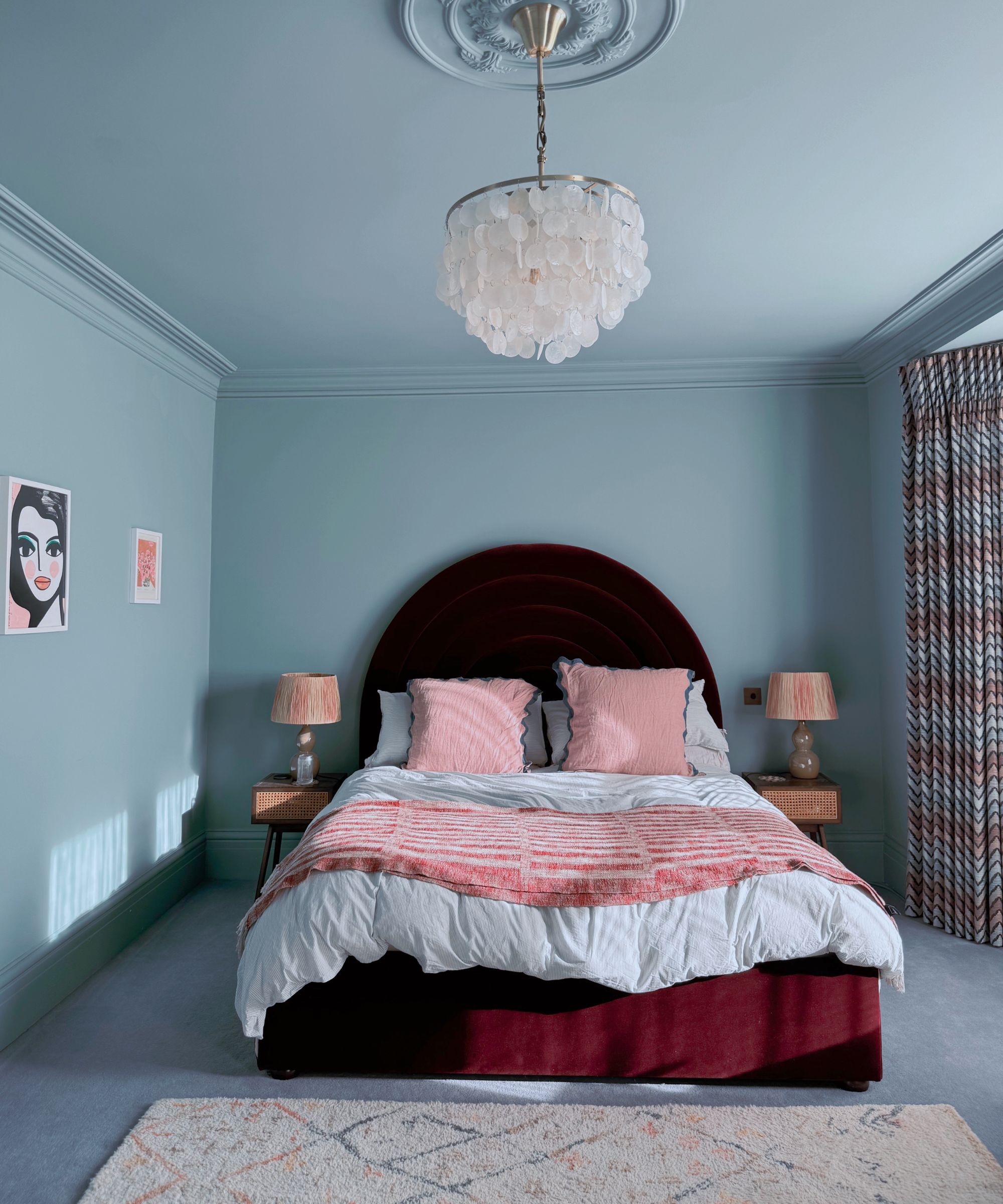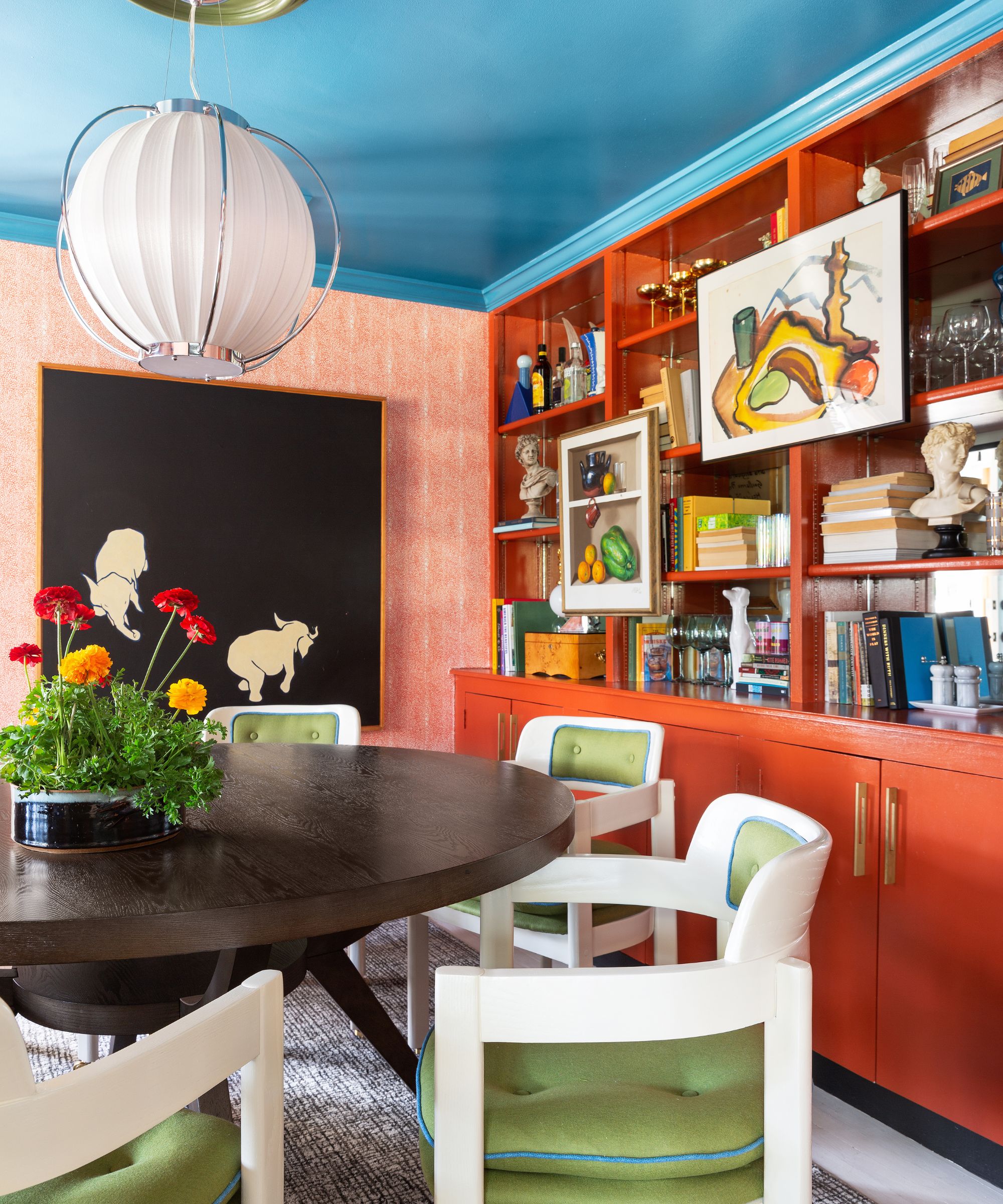Should you always paint a ceiling white? Color experts weigh in on this old-school approach
Is it time to rethink painting ceilings white? Designers share all on this much-debated topic


If you've ever embarked on choosing a color scheme for a room in your home, you'll have no doubt questioned what color the ceiling should be. More specifically, should you always paint ceilings white?
A common question in the world of interior design, the fifth wall of a room will indeed play a key role in either making or breaking your entire color scheme, so it's important to work out what's best for your space.
While white ceiling ideas are typically regarded as the traditional or 'safe' approach, that's not to say they're the only, or best option. In fact, designers are more and more decorating them with color.
To settle the debate, we asked interior designers to share all. Read on to explore when to embrace decorating with white, and when it's time to ditch the white ceiling paint ideas altogether and venture into the world of color.
Should you always paint a ceiling white?
'The ceiling is your fifth wall and it needs as much careful consideration as the other walls,' says Tash Bradley, Director of Interior Design at Lick and color psychologist.
As with all other paint ideas for your home, there is no right or wrong answer. If you love clean, pared-back interiors, a white ceiling is a timeless choice, but on the other hand, experts say that colorful rooms don't always benefit from a white ceiling.
According to Tash, bright white paints can be known to negatively impact the space by surprisingly, making rooms appear smaller. 'Using a stark white color will immediately make your ceiling the lightest point of the room and therefore will draw the eye upwards and detract from a well-furnished and decorated space. It can also make the room feel smaller and cramped, as a white ceiling will create a sharp line between where the walls end, and can often look unfinished.'

However, interior designer Kathy Kuo says that white ceilings can be a versatile option that fits with pretty much every interior design style. 'A white ceiling is certainly a great neutral choice that is going to work in 99% of rooms. Painting a ceiling is a big undertaking, and I would recommend going with a standard white color that isn't going to need much maintenance.'
While there are certainly advantages to white ceilings, it's worth considering other options too. If your home is colorful, the ceiling can be a great way to continue a bold approach, while experts also say color-drenching ideas create a more cohesive look than a white ceiling.
'Ceilings definitely don't always need to be white, or an afterthought for that matter,' says designer Isy Runeswe of Isy's Interiors. 'Make the ceiling part of the design by painting it a color, or our favorite: add wallpaper.'
When to paint a ceiling white, and when to embrace color
Below, we've rounded up three of the best colors to paint a ceiling, giving you ideas for white ceilings and more colorful options too, depending on your decorating style.
1. Use warm whites in place of stark whites for pared-back schemes

If you are drawn to the classic, pared-back appeal of a white ceiling, it's important to choose the right shade of white paint. Steering clear of stark, cool-toned whites that appear harsh against other wall colors and instead choosing soft, warm whites, can be a great way to embrace white ceilings stylishly.
'We steer clear of recommending a stark bright white for ceilings as it can feel overly clinical and disrupt the harmonious flow of your interior palette,' says designer Jenny Weiss, co-founder of Hill House Interiors.
Jenny recommends softer whites for the ceiling to create a more welcoming look. 'A personal favorite is the Slaked Lime collection by Little Greene, which offers five exquisite neutral tones. We prefer using the lightest shade for ceilings; the second tone for architraves and skirting; and for walls we opt for richer, deeper tones. This is the perfect way to ensure a seamless and sophisticated blend of colors.'
Tash also suggests warm white paints for the ceiling, adding that these hues can enhance the room's natural light. 'Choosing a warm white such as Lick's White 03 can provide a soft transition for the eyes and create a calming effect, while also reflecting more natural light around the room.'

If you want to embrace the calming and understated quality of a white ceiling, opt for Lick's White 03, a creamy, warm white paint that avoids appearing stark.
2. Embrace color drenching for soft color schemes

Lick's Teal 02
The common issue with painting a ceiling white when the room's walls are a different color is that the contrast can appear too harsh. What we're seeing designers doing much more often in 2024, is ditching the white ceiling altogether and continuing the wall color across the ceiling.
This works especially well with soft hues, such as earth tones or warm neutrals, which will almost certainly look more effective when they're used across the whole room: not forgetting the woodwork and architectural details in addition to the walls and the ceiling.
'Using soft colors such as Lick's Teal 01 on the ceiling is a great alternative, creating a seamless, color-drenched appearance that blurs the edges between the walls and the ceiling. This contributes to a light, airy feel that wraps the color around the entire room,' explains Tash.
'Pink can be coined a 'new neutral' as it works in a huge variety of rooms and pairs with most colors. Lick's Pink 01 is a great choice for a bedroom ceiling as it has naturally cocooning and nurturing qualities and therefore is ideal for sleep support.'

Color drenching a room (including the ceiling) in Lick's Pink 01 will create a cozy and cohesive look, perfect for rooms such as bedrooms.
Alternatively, a similar approach can be followed if your room features wallpaper ideas, according to interior designer Soledad Alzaga. 'If you have wallpaper or some special finish on the walls, paint the ceiling in one of the colors used on the walls for a cohesive look. A cozy room looks great with the ceiling painted the same color as the walls so you feel embraced in the space.'
3. Ditch white ceilings in bold color schemes

'We tend to have more fun with ceilings and think outside the box,' says Miranda Cullen, owner and principal designer of Inside Stories, who recommends experimenting with wallpaper on the ceiling or painting it a contrasting, bold hue to add interest and drama to the room.
This approach is demonstrated in this bold and playful dining room designed by The Rath Project. Fully embracing a daring approach to color, the ceiling is painted in an uplifting blue, contrasting with the red built-in cabinetry to create a complementary color scheme. Rather than considering the ceiling as a tertiary part of the room, it has been reimagined as a focal point and a key component in achieving the room's vibrant look.
'Why paint a ceiling white when you can inject more personality into the space with color?' says Diana Rath, owner and principal designer of The Rath Project. 'Color on a ceiling can help direct light and make you feel warm and enveloped, and we love to use color on a ceiling to tie together other elements from the room.'
While a white ceiling is a timeless option for light and airy rooms, there's no doubt that color drenching or creating an unexpected moment with a bolder color can be more effective in certain rooms. If you're looking for more advice, take a look at colors you should never paint a ceiling to narrow down your ideas.
Sign up to the Homes & Gardens newsletter
Design expertise in your inbox – from inspiring decorating ideas and beautiful celebrity homes to practical gardening advice and shopping round-ups.

Emily is a freelance interior design writer based in Scotland. Prior to going freelance in the spring of 2025, Emily was Homes & Gardens’ Paint & Color Editor, covering all things color across interiors and home decor for the Homes & Gardens website. Having gained specific expertise in this area, Emily is well-versed in writing about the latest color trends and is passionate about helping homeowners understand the importance of color psychology in home design. Her own interior design style reflects the simplicity of mid-century design and she loves sourcing vintage furniture finds for her tenement flat.
-
 How to get rid of bean seed flies – a pest control expert reveals how to keep crops safe from these seed munchers
How to get rid of bean seed flies – a pest control expert reveals how to keep crops safe from these seed munchersAs their name implies, these insects primarily feed on bean crops
By Tenielle Jordison
-
 Sarah Michelle Gellar's kitchen cabinets are moody yet elevated – I've always used dark paint with caution, but they make bolder tones accessible
Sarah Michelle Gellar's kitchen cabinets are moody yet elevated – I've always used dark paint with caution, but they make bolder tones accessibleThe actress's black kitchen cabinets are bold yet palatable, proving that this dark shade is a trendy yet timeless color pick
By Hannah Ziegler